Introduction
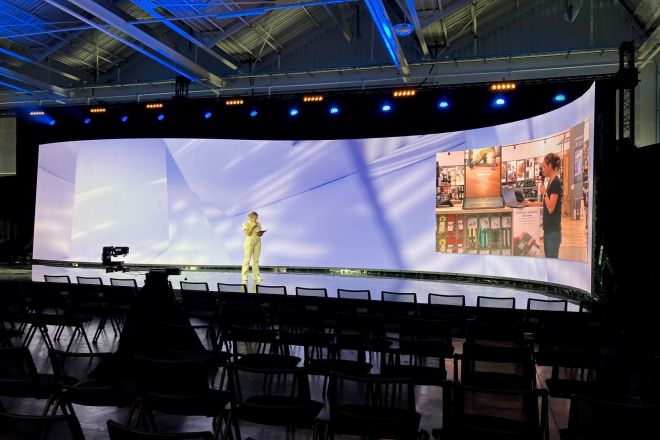
With the rapid development of technology, LED rental screens, as an efficient and flexible display device, have penetrated into every aspect of our lives. From bustling commercial streets to stunning concert sites, to technology exhibitions and sports events, LED rental screens have brought us an unprecedented visual experience with their excellent performance and diverse application scenarios.
1. What exactly is an LED rental screen? How do they differ from permanent installations?
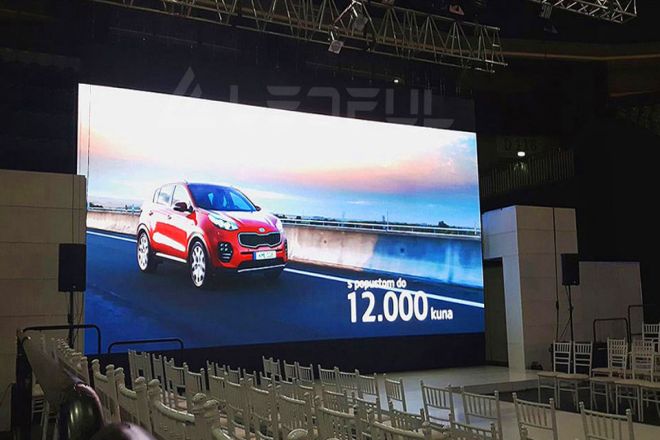
The LED rental screen is a mobile video display device specially designed for various temporary activities and occasions. There are significant differences between them and permanently installed LED displays in terms of definition, characteristics, use, design, and installation.
1). Definition and characteristics:
The LED rental screen uses high-quality LED chips and advanced control systems to ensure the clarity and color performance of images and videos. They have the following unique features:
High Definition: High-resolution video playback ensures the clarity and color performance of images and videos.
Light and easy to build: It usually adopts a modular design. Each module is the same size and can be assembled into displays of different sizes. It is quick and convenient to install and easy to transport and build.
High detachability: Rental screens usually adopt a spliced design, and individual modules can be removed or replaced as needed to avoid comprehensive replacement of the entire display.
Good display effect: LED lamp beads have high brightness and good uniformity and can achieve bright, clear, and high-contrast display effects in various light environments.
Environmental protection and energy saving: LED lamp beads are mercury-free, have low radiation, have a long service life, and low power consumption, which not only saves energy costs but also reduces the impact on the environment.
2). Temporary vs. permanent:
The main differences in use, design, and installation between LED rental screens and permanently installed LED displays are as follows:
Usage: LED rental screens are mainly used for various temporary activities and occasions, such as concerts, exhibitions, conferences, etc., and can be set up and dismantled at any time as needed. Permanently installed LED displays are mainly used in fixed places, such as commercial buildings, sports venues, etc. Once installed, they are rarely dismantled and moved.
Design: The design of LED rental screens pays more attention to being lightweight, easy to disassemble and resistant to handling, so as to reduce damage and labor costs during transportation and installation. Permanently installed LED displays pay more attention to stability and durability to ensure long-term stable operation.
Installation: The installation and disassembly of LED rental screens usually need to be completed in a short time to adapt to the rapid changes and needs of the event. The permanently installed LED display needs to go through a strict installation and debugging process to ensure its stability and display effect.
2. How does the LED rental screen enhance audience participation?
LED rental screens can significantly enhance audience engagement through their unique visual impact, interactivity, and content versatility. The following is a detailed explanation of these three aspects:
- Visual impact:
LED rental screens are characterized by their high resolution and brightness, which can produce a strong visual impact. This impact quickly grabs the attention of viewers, especially outdoors or at large events, and its high brightness and vibrant colors remain visible in any lighting condition.
When viewers are captivated by this visual impact, they are more likely to be attracted to the content on the screen, increasing interest and engagement in the event.
- Interactivity:
The LED rental screen allows the audience to directly participate in the event by integrating various interactive elements. For example, through touch technology, viewers can operate directly on the screen and interact with screen content.
In addition, LED rental screens can also be connected to mobile devices (such as mobile phones, tablets, etc.). Audiences can interact with screen content by scanning QR codes or downloading special APPs, such as voting, answering questions, games, etc.
This interactivity not only increases audience participation but also makes the event more lively and interesting, increasing audience satisfaction and loyalty.
- Content Versatility:
The content of LED rental screens can be very diverse, including videos, pictures, text, etc. To most effectively enhance audience engagement, you should choose content that is closely related to the theme of your event and resonates with your audience.
For example, in concerts, singers’ MVs, highlights, and on-site interactive sessions can be played; in exhibitions, product features, usage methods, and application scenarios can be displayed; in sports events, game footage, statistics, and live broadcasts can be played in real-time. Audience interaction sessions, etc.
Not only does this content capture your audience’s attention, but it also allows them to gain a deeper understanding of the event theme, increasing engagement and satisfaction.
3. What technical specifications should you pay attention to when renting an LED screen?
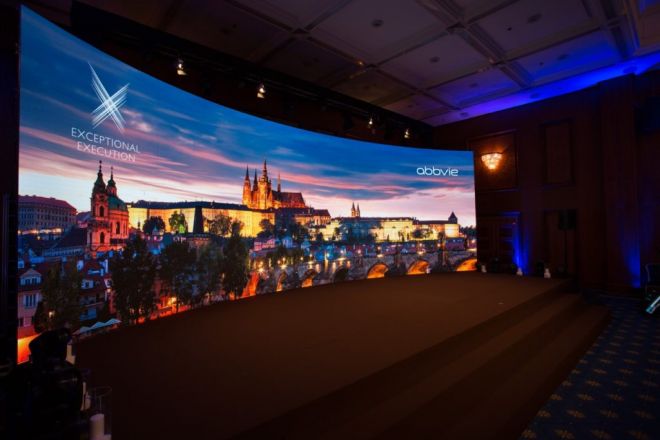
When selecting and using LED rental screens, you do need to pay attention to a series of technical specifications to ensure that they can achieve the best results in various environments and applications. Here is a detailed explanation of and importance of pixel pitch and resolution, brightness levels, and weather resistance:
1). Pixel pitch and resolution:
- Explanation:
Pixel pitch (Pixel Pitch) refers to the center distance between two adjacent pixels on the LED display, usually in millimeters (mm). Resolution is the total number of pixels on the screen, usually expressed in the form of the number of horizontal pixels × the number of vertical pixels.
- Importance:
Pixel spacing and resolution directly determine the display clarity and fineness of the LED rental screen. A smaller pixel pitch means higher resolution and is capable of displaying more detailed and clearer images and videos. This is especially important where high-definition content needs to be shown or where close viewing is required.
2). Brightness level:
- Explanation:
The brightness level refers to the luminous intensity of the LED display, usually in candelas per square meter (cd/㎡).
- Importance:
Different usage environments have different requirements for the brightness of LED rental screens. For example, indoor environments generally do not require too high brightness, while outdoor environments require higher brightness to ensure that content is clearly visible due to the impact of direct sunlight and open spaces.
Therefore, when choosing an LED rental screen, you need to determine the appropriate brightness level based on the specific use environment.
3). Weather resistance:
- Explanation:
Weather resistance refers to the ability of LED display screens to resist various natural factors (such as sunlight, rain, wind and sand, high and low temperatures, etc.) in outdoor environments.
- Importance:
Weather resistance is a very important technical indicator for LED rental screens that need to be used outdoors. An LED rental screen with good weather resistance can ensure normal operation in various harsh outdoor environments and maintain good display effects. Therefore, when choosing an outdoor LED rental screen, you need to pay special attention to its weather resistance.
4. Can LED rental screens be customized for different event types?
LED rental screens can indeed be customized for different event types to meet a variety of special needs and innovative applications. Below is a detailed explanation of modular design, special configurations, and case studies:
- Modular design:
The modular design of the LED rental screen allows users to flexibly choose the size and shape according to their needs. This means that the size and shape of the screen are no longer limited and can be adjusted according to the venue layout and display needs of the specific event.
By splicing multiple modules, displays of different sizes and shapes can be easily realized to suit various scenarios. This flexibility makes LED rental screens ideal for a variety of events and occasions.
- Special configuration:
In addition to basic rectangular and square screens, LED rental screens can also be specially configured to create more innovative and attractive display effects.
For example, curved screens can provide viewers with a more immersive viewing experience, making them feel more immersive. This configuration is particularly suitable for concerts, sporting events, and other occasions where it is necessary to attract the attention of the audience.
Another example is the 3D arrangement. By arranging LED modules at specific angles and positions, a three-dimensional and layered display can be created. This configuration can be used to display complex graphics, animations, and models, bringing a more vivid and interesting visual experience to the audience.
5. How can the quality of LED rental screen suppliers be evaluated?

When evaluating the quality of LED rental screen suppliers, you can investigate the following aspects:
- Reputation and Reviews:
Checking a supplier’s credibility and reputation is an important step in assessing their quality. You can learn about a supplier’s reputation and customer feedback through web searches, social media, industry forums, and more.
Customer reviews and comments can provide direct information about the supplier’s product quality, service attitude, delivery time, etc., and help to gain a more comprehensive understanding of the supplier’s actual performance.
In addition, you can also check whether the supplier has relevant certifications and qualifications, such as ISO certification, quality management system certification, etc., to further confirm its professionalism and reliability.
- Service and support:
A high-quality LED rental screen supplier should provide comprehensive technical support and maintenance services. This includes providing timely technical support and solutions during installation, commissioning, use, and maintenance.
Ask the vendor about the size and experience of its technical support team and whether it offers services such as 24-hour online service or emergency response. These services can ensure that problems encountered during use can be solved in a timely manner to avoid affecting the normal progress of activities.
In addition, you can also check whether the supplier provides training and guidance to ensure that customers are proficient in the use and maintenance of LED rental screens.
- Portfolio:
Reviewing a supplier’s past projects and clients is an effective way to assess its quality. By reviewing the supplier’s past project cases and customer list, you can understand its application experience and service capabilities in different fields and scenarios.
You can pay attention to the supplier’s successful cases in similar activities or scenarios to learn about its professionalism and innovation in design, installation, debugging, etc. At the same time, you can also contact the supplier’s past customers to understand their evaluation and feedback on the supplier.
By analyzing a supplier’s portfolio, you can determine whether it has the capabilities and experience to meet the needs of your current campaign, allowing you to make a more informed choice.
6. What are the main considerations for setting up LED rental screens?
When setting up an LED rental screen, the main factors to consider include the following aspects:
- On-site assessment:
Before starting to set up your LED rental screen, it is crucial to conduct a thorough site survey. This includes an assessment of the site’s size, shape, ground conditions, surroundings, and possible obstacles.
An on-site assessment helps determine the best screen size, location, and installation method to ensure the screen can fully display its content while avoiding any potential safety issues or visual obstructions.
- Power and connections:
Ensuring reliable power and connection options are factors that cannot be ignored when setting up an LED rental screen.
The appropriate power supply and cables need to be selected based on the size of the screen, power requirements, and run time. At the same time, the stability and safety of the power supply need to be considered to avoid screen failure caused by insufficient power or power fluctuations.
In terms of connectivity, you need to ensure that the connection between the screen and the signal source is stable and reliable to avoid signal interruption or delay during the event. This may require the use of high-quality data cables, fiber optics, or other transmission media, with redundant design where necessary.
- Installation and safety:
Professional installation practices are the key to ensuring the safe and stable operation of LED rental screens.
The installation process needs to follow relevant safety standards and specifications to ensure that the screen structure is stable and the connection is reliable. Brackets, hangers, or other fixtures may be required to ensure screen stability and security.
During the installation process, you also need to consider preventing the risk of the screen being damaged or stolen. This may include using security fencing, installing surveillance cameras, or other security measures.
In addition, in order to ensure the long-term stable operation of the screen, regular maintenance and inspections are required, and damaged parts should be replaced or potential problems repaired in a timely manner.
7. How do we maximize the return on investment of LED rental screens?
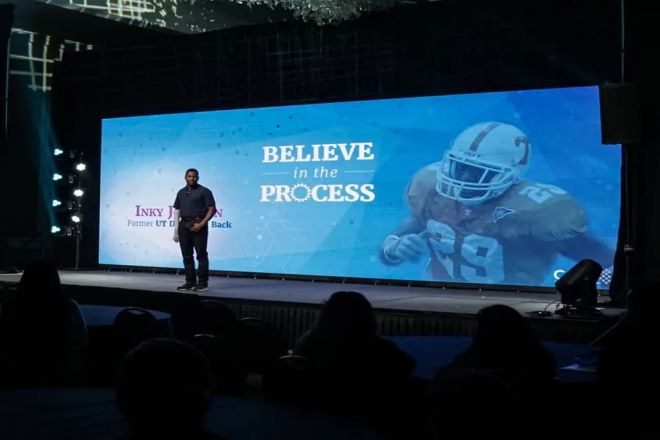
To maximize the return on investment of LED rental screens, you can start from the following aspects:
- Effective content creation:
Content is key to engaging your audience and leaving a lasting impression. Therefore, you should ensure that the content displayed on the LED rental screen is attractive, interesting, and impactful.
First, the content should match the interests and needs of your target audience. Understand your audience’s preferences and expectations, then create content that is relevant to them.
Second, use high-quality images, videos, and animations to enhance the appeal of your content. Make sure your content is designed to be clear, concise, and easy to understand.
Finally, update your content regularly to keep it fresh. Regularly changing ads, promotional messages, or interactive content can capture your audience’s attention and increase engagement.
- Audience interaction:
Using LED rental screens for real-time interaction and feedback is an effective way to increase return on investment. By integrating touch technology, gesture recognition, QR code scanning, and other functions, viewers can interact with screen content.
For example, you can design interactive games, Q&A sessions, or polls that allow viewers to participate by touching the screen or scanning a QR code. This not only increases audience engagement and interest but also collects audience feedback and data.
Interactive features can also be integrated with social media, allowing viewers to share their experiences in front of the screen and interact with friends. This helps expand brand exposure and influence.
- Data analysis:
Tracking engagement and effectiveness is a critical step in optimizing your LED rental screen ROI. By collecting and analyzing audience data, you can learn which content is popular, which interactive activities are effective, and which time periods have the highest audience engagement.
Use this data to adjust content strategy, optimize interactive campaigns, and improve screen layout and settings. This helps ensure that the LED rental screen can achieve maximum effect during the event and bring a higher return on investment.
In addition, data analysis results can be used in future event planning and marketing decisions to further increase return on investment.
8. What common pitfalls should you avoid when renting an LED display?
When renting an LED display, there are several common pitfalls that require special attention to avoid potential problems and unnecessary trouble. Here are these pitfalls and how to avoid them:
1). Technical glitch
- Pitfalls:
Technical glitches may cause the display to not work properly at critical moments, affecting the smooth progress of the event.
How to avoid:
Before leasing, make sure the technical specifications and performance provided by the supplier meet your needs.
Require suppliers to provide complete test reports and maintenance records to ensure that the display is in good condition.
Conduct adequate testing before the event, including checking connections, power, brightness, color accuracy, etc.
Have a backup backup plan, such as a spare display or technical support personnel, in case of a possible failure.
2). Content issues
- Pitfalls:
Low-quality or irrelevant content may fail to capture your audience’s attention or even negatively impact your brand image.
- How to avoid:
Before leasing, discuss and clarify content requirements with the supplier to ensure the content matches your brand image and event goals.
Prepare high-quality, interesting, and relevant content to ensure it captures and holds your audience’s attention.
Conduct content testing before the event to ensure that what appears on the display is what you expect.
Adjust content strategy based on audience feedback and data analysis to optimize engagement and performance.
3). Logistics challenges
- Pitfalls:
Logistical issues during transportation and installation can prevent displays from arriving on time or being installed correctly, impacting the preparation and execution of the event.
- How to avoid:
Before leasing, discuss and clarify transportation and installation plans with the supplier to ensure they meet your schedule and site requirements.
Choose an experienced and reliable supplier who can provide professional logistics services and installation support.
Maintain close communication with suppliers before the event to keep abreast of the progress of transportation and installation and any potential issues.
Prepare backup plans in case of possible logistical delays or installation issues.
By avoiding these common pitfalls, you can ensure that the LED display rental process goes smoothly and provides your event with a high-quality, engaging visual display.
9. What is the future trend of LED rental screens?
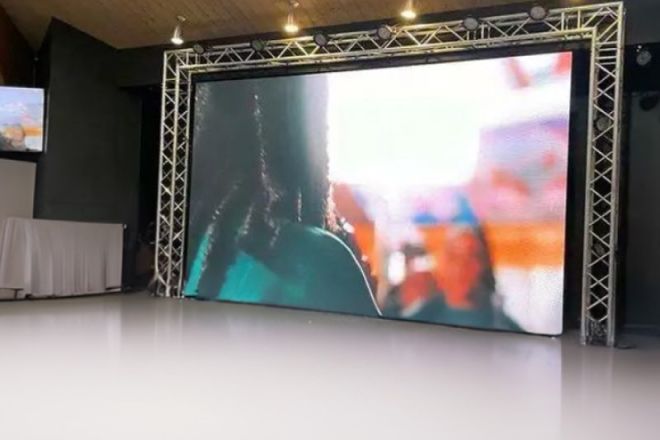
The future trend of LED rental screens is expected to show the following developments:
1). Skill improved:
- Artificial intelligence integration:
With the continuous development of artificial intelligence technology, LED rental screens may integrate more AI functions, such as intelligent content recommendation, real-time data analysis, audience behavior prediction, etc. This will make LED rental screens more intelligent and efficient in terms of content display, audience interaction, and data analysis.
- Higher resolution:
With the continuous advancement of display technology, the resolution of LED rental screens will also continue to increase. Higher resolution will bring more delicate and realistic picture effects, further improving the audience’s viewing experience.
- Flexible display:
The development of flexible display technology will make LED rental screens more flexible in shape and size. Flexible LED rental screens can adapt to various complex installation environments and creative needs, bringing more innovative visual displays to event sites.
2). Market trend:
- Demand growth:
As LED display technology continues to mature and costs decrease, the market demand for LED rental screens will continue to grow. Especially in sports events, concerts, exhibitions, advertising , and other fields, LED rental screens will play a more important role.
- New application expansion:
In addition to traditional application scenarios, LED rental screens will also expand into more new application areas. For example, in the construction of smart cities, LED rental screens can be used for traffic information display, public information release, etc.; in the fields of virtual reality and augmented reality, LED rental screens can be combined with VR/AR technology to bring a more immersive experience to the audience. Experience.
- Standardization and modularization:
In the future, the LED rental screen market will pay more attention to product standardization and modular design. This will help reduce production costs, improve production efficiency, and make the installation, debugging, and maintenance of LED rental screens more convenient and efficient.
- Green and sustainable development:
With the continuous improvement of environmental awareness, the LED rental screen industry will also pay more attention to green and sustainable development. The use of environmentally friendly materials, reduction of energy consumption, and reduction of pollution will become important directions for the development of the industry.
Conclusion
After a comprehensive analysis of the LED rental screen, it is not difficult to find that it is not only a display device, but also a product of the perfect combination of technology and market. With the continuous innovation of technology and the continuous expansion of the market, the application scenarios of LED rental screens will become more and more extensive, and its potential will be further released.
Finally, if you want to know more about LED displays, please get in touch with us.
